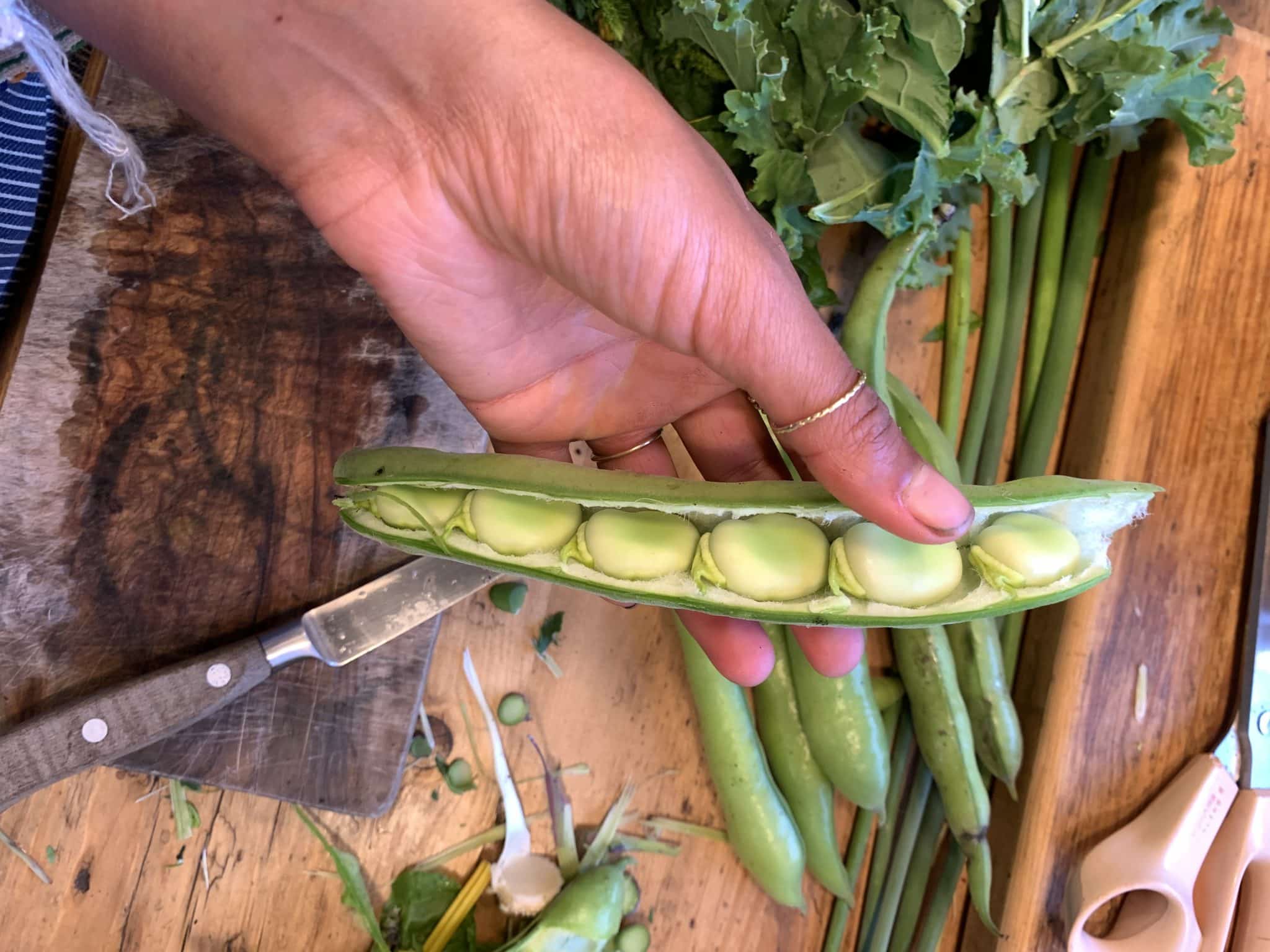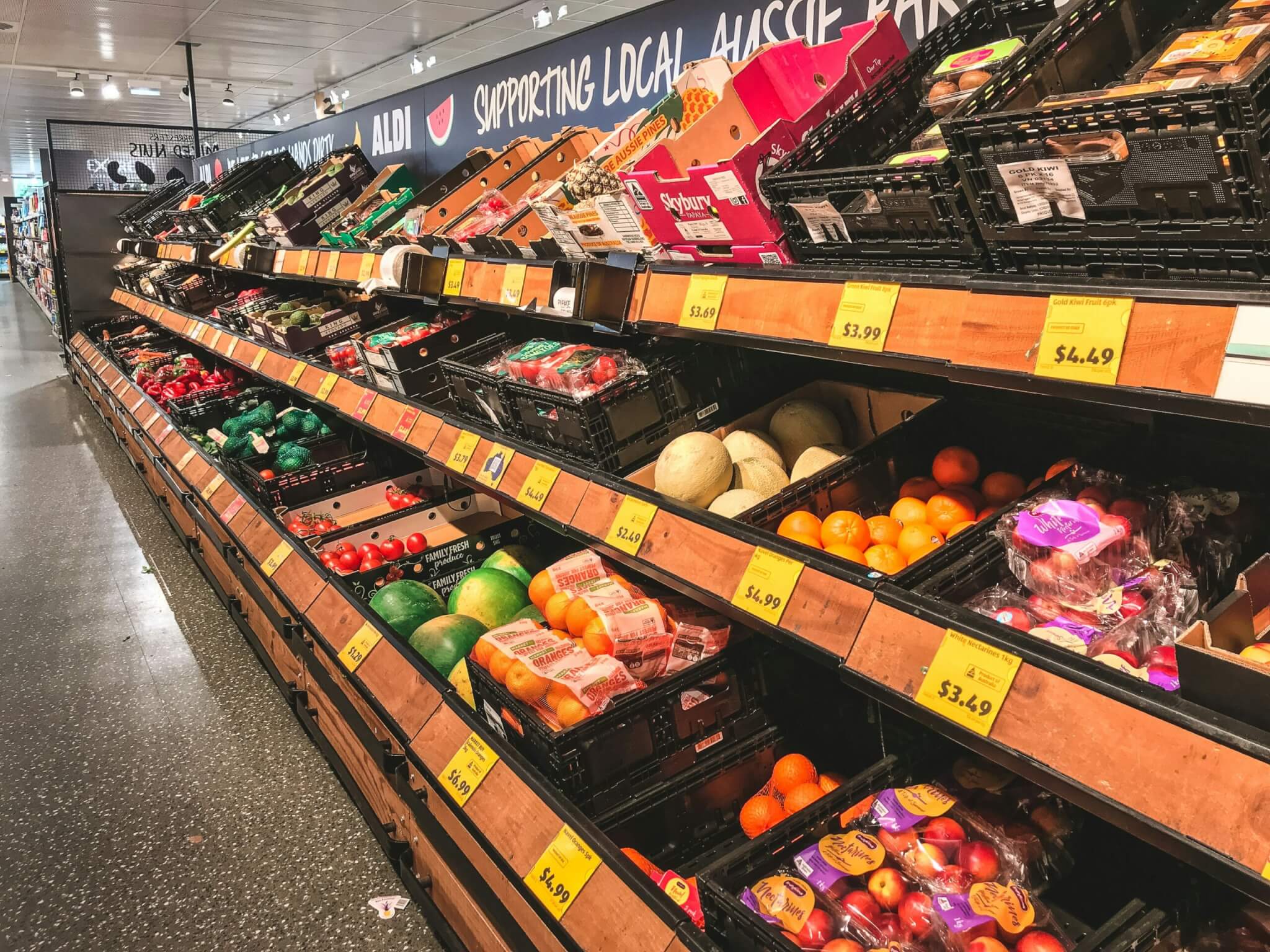Practically Radical is a column by ecological grower Poppy Okotcha on gardening and optimism. @poppyokocha.
Several years ago, it occurred to me that sowing seeds in little pots of compost in spring took a great deal of time, resources, skill and heartache.
Around the same time, while out gathering wild foods, I’d noticed that there was nearly always something germinating. Although germination definitely seemed to happen for many seeds in spring, there were plenty of renegades ahead of the trend popping up in autumn or winter, and others turning up in summer fashionably late.
As an experiment, I decided to try direct sowing seed months and months too early. I wanted to discover if, by letting the plant germinate and grow when it wanted to (rather than pampering and coaxing seed into germination on demand), I would find myself with healthier plants that needed less fussing.
Broad beans (Vicia faba) were one of the seeds I tested. I popped the seed to bed in autumn and waited. Since spring was the time of year I was accustomed to sowing them, I expected the beans to germinate as temperatures warmed. To my surprise, they rose from slumber in early winter. Amazed, I watched as they put on growth through the cold darkness of December and then continued to dash ahead when light hours lengthened in February, giving me a crop more than a month earlier than I’d expect from spring sowings.
Reconnecting with where our food comes from offers the fastest route into grasping the true value of what we eat.
After looking it up, I found many people do in fact sow broad beans in autumn to give them a head start. It is possible for them to germinate in temperatures as low as two degrees, and since they are hardy they can handle some frost. Sowing them early is a great way of keeping roots in the ground over winter, keeping the bed productive and reducing chances of the crop being decimated by black fly.
As a rule, I now sow broad bean seeds in autumn to germinate at their leisure. This year’s crop (Vicia faba ‘Aquadulce’), however, have not survived the winter. December’s deep cold snap followed by torrential rain battered them to a slimy mess. Even hardy plants have limits.
The weather was indeed bad, but my error was actually to sow the beans in a patch of field, which we now know to be a frost pocket. This being my first winter growing in the field, I curse myself for not having noticed the way the land swoops down to a high hedge, providing the fatal combination of day-long winter shade and a pooling place for cold air flowing downhill at night.
The IPCC’s Special Report on Climate Change and Land acknowledges that the shift from subsistence lifestyle in modern cultures has led to a loss of indigenous, local knowledge about how to live with respect for natural resources.
But as I have experienced first-hand, it has also led to a loss of appreciation for the sheer knowhow and effort required to produce good food, particularly in the face of progressively less predictable weather events.
In our modern lives cast in the role of ‘consumer’, the real cost and value of food can so easily be obscured from vision. For example, crop loss at any scale is a reality few of us ever face or feel beyond a slight price hike.
While I do not romanticise the hardships of a subsistence lifestyle, I do wonder if hands-on experience of growing some food should, and could, be an essential part of all of our lives.
I find reconnecting with where our food comes from offers the fastest route into grasping the true value of what we eat and the need for a genuinely reciprocal relationship with the earth. More and more science is telling us that a meaningful relationship with land is good for our minds as well as our bodies. It’s a simple lesson that when we care for the land, the land cares for us.










A little tid-bit of information I learned in 2022:
I’m always mulching my beds, even in the community garden where some are still programmed to assume bare soil is the only look permissable.
I found from the previous 2018 drought that mulched beds stay damp under the mulch for up to six weeks, long after the nearby unmulched beds had dried out.
The 2022 drought brought another insight – in one bed the soil was very dry even under the mulch, but my potatoes had grown anyway, just residing in the mulch layer. They weren’t huge, and the it wasn’t a huge crop, but at least I didn’t lose that particular crop.
I planted 16 broad bean seeds in little thingies following instructions in a book on veg beds (the aim was to get 12 so allowing 4 for failure). They all germinated. Wow! So I sowed 16 more of the same batch of seeds in the same compost on the same window sill. 1 germinated.
Having failed to grow peas and dwarf beans (which apparently takes some doing), but having decent success with runner beans (which I do like), enthusiasm waned. I’d even put horse manure on the beds.
One is supposed to learn from mistakes. But how does one learn when germination is so capricious? Do I plant 144 seeds to get 12?
At my advanced age, I haven’t got many years left to learn from!
I’ve done ‘no mow May’ for a few years. Any wildflowers? No.
I also think yellow rattle is a mythical plant. I’ve planted it in bare soil, scraped grass (as told by Monty Don) and bought it in wildflower turf. Never seen a single plant.
I don’t get this growing malarkey.
The weeds don’t seem to h ave a problem.
(And the goldfinches won’t eat Nyger seed. I’ve got 4 kilos of the stuff. Anyone up for a couple of packers?)
O.K. I have an allotment which makes life a lot easier I always plant broad beans early to mid November. I save seeds from last year and plant direct sowing down the side of beds so leaving room in the bed to plant other crops before harvesting. Last November I planted 430 seeds and nearly all came up and are doing well the sowing was staggered which means I don’t have to harvest all of them at the same time but still avoid the worst of the dreaded blackfly.
However I have problem with beetroot the last three years something I think nice or perhaps slugs are eating the crop before harvesting very frustrating,still you can’t win them all